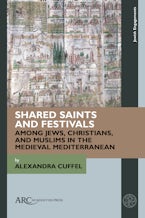- Home
- Beyond Medieval Europe
- history
- Social Norms in Medieval Scandinavia
Social Norms in Medieval Scandinavia
Edited by Jakub Morawiec, Aleksandra Jochymek and Grzegorz Bartusik
Series: Beyond Medieval Europe
288 Pages, Trim size: 6 x 9 in
- Hardcover
- 9781641892407
- Published: August 2019
$150.00
£125.00
In the Viking Age and medieval Scandinavia, social values such as reputation, honour, and friendship, were integral to the development of rituals, customs, religion, literature, and language. Everyday norms are mainly conveyed orally or ritually, and rarely in a written or material shape. Despite this, the Old Norse-Icelandic literary corpus remains the most important source of our present-day knowledge of social development in the medieval North. New research methods allow us to explore how relics of the material culture of the medieval north can confront, corroborate, or disprove the depiction of social norms in medieval Scandinavian literature. This volume considers in depth how social norms affected the creation and functioning of societies in the medieval North, approaching the topic from a range of disciplinary angles including law-making, politics, religion, and literacy.
Preface: Jakub Morawiec, Aleksandra Jochymek, Grzegorz Bartusik
Introduction: The goðar and “cultural politics” of the years c. 1000-1150, Jón Viðar Sigurðsson
PART I: Pre-Christian Ritual Practice and Literary Discourse
1. The Use of Silver by the Norsemen of Truso and Wolin: The Logic of the Market or Social Prestige?, Dariusz Adamczyk
2. Silk, Settlements and Society in Íslendingasögur, Anita Sauckel
3. Being ÓðinnBursson: The Creation of Social and Moral Obligation in Viking-Age Warrior-Bands through the Ritualized, Oral Performance of Poetry: The Case of Grímnismál, Simon Nygaard
4. Elements of Satire and Social Commentary in Heathen Praise Poems and Commemorative Odes, David Ashurst
5. Friendship and Man’s Reputation: A case of “Odds þáttr Ófeigssonar”, Marta Rey-Radlińska
PART II: Reception and Cultural Transfer
6. Cultural Transfer of Cognitive Structures of Fortune in the Latin and Old Icelandic Literatures and Languages: The case of the metaphor Fortune is a Wheel, Grzegorz Bartusik
7. Dating, Authorship and Generational Memory in Ljósvetninga saga: A Late Response to Barði Guðmundsson, Yoav Tirosh
8. Quid Sigurthus cum Christo? An Examination of Sigurd’s Christian Potential in Medieval Scandinavia, Łukasz Neubauer
9. Jómsborg and the German reception of Jómsvíkinga saga: Introducing masterhood as a social norm, Michael Irlenbusch-Reynard
PART III: Outsiders and Transgressors
10. The Unfamiliar Other: Distortions of Social Cognition Through Disguise in Two Íslendingasögur, Alexander Wilson
11. A Deviant Word Hoard: A Preliminary Semantic Study of Non-Normative Terms in Early Medieval Scandinavia, Keith Ruiter
12. Enchanting the Land: Monstrous Magic, Social Concerns and the Natural World in the Íslendingasögur, Rebecca Merkelbach
13. Social Margins in Karlamagnús saga: The Rejection of Poverty, Aleksandra Jochymek
14.Þóttimǫnnum … hannmyndiverðaengijafnaðarmaðr: The Narrator, the Trouble-Maker, and Public Opinion, Joanne Shortt Butler
15. Discipline or punish? Travels and outlawry as social structures in medieval Iceland, Marion Poilvez
Index
Jakub Morawiec is Associate Professor in the Institute of History of the University of Silesia, specializing in Scandinavia and the Viking Age, skaldic poetry, and Old-Norse literature.
Aleksandra Jochymek is a Doctoral Researcher in the Institute of History of the University of Silesia with a specialism in medieval history.
Grzegorz Bartusik is a Doctoral Researcher in the Institute of History of the University of Silesia with a background in Classical Philology.
This is a welcome collection of essays on an important topic and should spark interest in pursuing the needed elaboration of a theoretical frame in which to analyze attitudes toward, and expressions of, normativity and its violation, not only in the fictional world of the sagas of Icelanders that view the national past through glasses idiosyncratically tinted dark-rose but also in the tumultuous thirteenth and fourteenth centuries that produced them. ~William Sayers, The Medieval Review 2021











